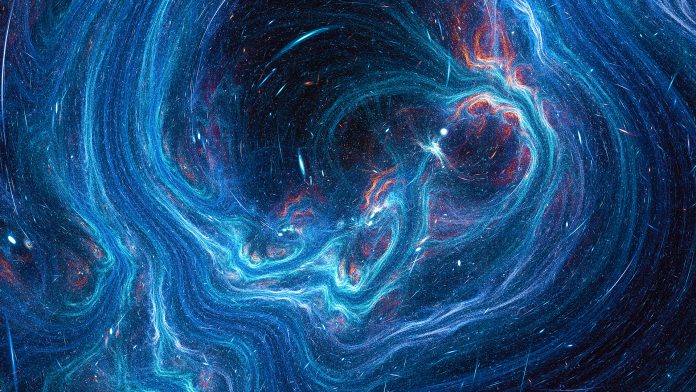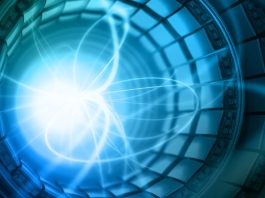A new experiment by a collaboration led by the University of Chicago and Fermi National Accelerator Laboratory, known as the Broadband Reflector Experiment for Axion Detection or BREAD experiment, has released its first results in searching for dark matter.
One of the great mysteries of modern science is searching for dark matter. We know dark matter exists thanks to its effects on other objects in the cosmos, but we have never been able to directly see it.
It’s no minor thing—currently, scientists think it makes up about 85% of all the mass in the Universe.
Despite not finding any dark matter, the scientists narrowed the constraints for where it might be and demonstrated a unique approach that may speed up the search for the mysterious substance at relatively little space and cost.
“We’re very excited about what we’ve been able to do so far,” said UChicago Associate Professor David Miller, who is co-leading the experiment with Fermilab’s Andrew Sonnenschein.
“This design has many practical advantages, and we’ve already shown the best sensitivity to date in this 11-12 gigahertz frequency.”
Searching for dark matter: What form could it take?
When we look around the Universe, we can see that some substance exerts enough gravity to pull on stars, galaxies, and passing light, but no telescope or device has ever directly picked up the source.
However, because no one has ever seen dark matter, we don’t even know exactly what it might look like or even precisely where to look for it.
“We’re very confident that something is there, but it could take many, many forms,” said Miller.
When searching for dark matter, scientists have mapped out several of the most likely options for places and forms to look at. Typically, the approach has been to build detectors to very thoroughly search one specific area (in this case, a set of frequencies) in order to rule it out.
However, a team of scientists explored a different approach. Their design is ‘broadband’, meaning that it can search a larger set of possibilities, albeit with slightly less precision.
“If you think about it like a radio, searching for dark matter is like tuning the dial to find one particular radio station, except there are a million frequencies to check,” said Miller.
“Our method is like scanning 100,000 radio stations rather than a few very thoroughly.”
The BREAD experiment will improve the search for axions
The BREAD detector searches for a specific subset of possibilities.
It’s built to look for dark matter in the form of what are known as ‘axions’ or ‘dark photons’ — particles with extremely small masses that could be converted into a visible photon under the right circumstances.
BREAD consists of a metal tube containing a curved surface that catches and funnels potential photons to a sensor at one end. The entire thing is small enough to fit your arms around, which is unusual when searching for dark matter.
In the full-scale version, BREAD will be settled inside a magnet to generate a strong magnetic field, which increases the chances of converting dark matter particles into photons.
For the proof of principle, however, the team ran the experiment sans magnets. The collaboration ran the prototype device at UChicago for about a month and analysed the data.
The results are very promising, showing very high sensitivity in the chosen frequency, the scientists said.
Miller concluded: “There are still so many open questions in science and an enormous space for creative new ideas for tackling those questions.
“I think this is a hallmark example of that kind of creative ideas – in this case, impactful, collaborative partnerships between smaller-scale science at universities and larger-scale science at national laboratories.”





